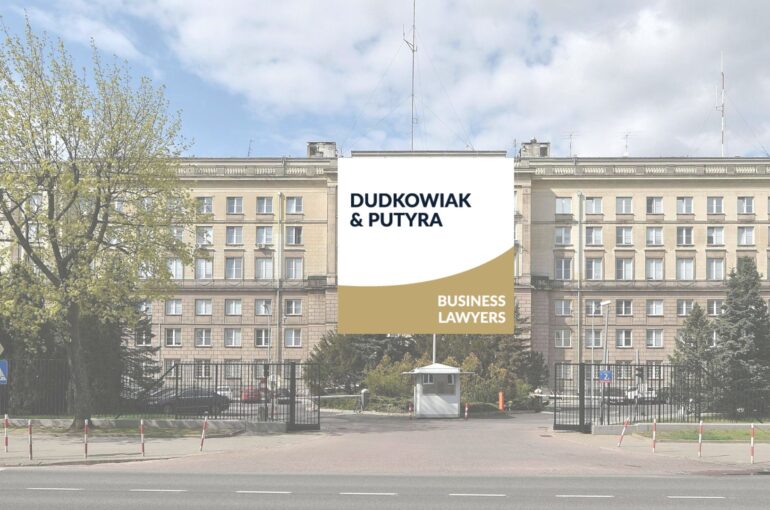AML procedure and verification of a beneficial owner – General Inspector of Financial Information Notice
Notice from the Inspector General of Financial Information
Banking, Fintech and Payment Services experts of our Law Firm in Poland informs that on January 14, 2022, Polish General Inspector of Financial Information (hereinafter: „GIFI„) issued a notice number 37 on the principles of recording discrepancies between the information collected in the CRBR and the information on the client’s beneficial owner determined by the obliged institution. The GIIF draws attention to:
- the necessity to introduce in the internal AML and terrorist financing procedure (hereinafter: „AML procedure„) the principles of noting discrepancies between the information collected in Polish Central Register of Beneficial Owners and the information on the customer’s beneficial owners – Article 50 of the Law on AML and terrorist financing (hereinafter: „AML/CFT„),
- the fact that the Polish statutory legal definition of a beneficial owner is an open catalog, and the list of potential beneficial owners in Article 2(2)(1)(a-c) of the AML/CFT is exemplary,
- the lack of adequate provisions in the AML procedure or their improper application by obliged institutions may result in control actions taken against them by the entities referred to in Article 130(1) and (2) of the AML/CFT.
Information contained in Polish Central Register of Beneficial Owners (hereinafter: „CRBR”)
GIFI points out that in accordance with the Polish Law, an obliged institution (incl. Fintech companies in Poland) should take into consideration the information collected in the CRBR when applying a financial security measure. At the same time, the GIFI stresses that from the point of view of the obligations imposed on the obliged institution it would be incorrect to rely solely on the information from the CRBR. The information contained in the aforementioned register should be treated only as an indication for determining the direction of further reasonable actions in order to verify the identity of the beneficial owner and to determine the ownership and control structure of the client.
As the GIFI states, the obliged institution may, for example, request the client to submit additional explanations, information, or documents – e.g. the contract of the limited liability company (the articles of association may provide for shares with special rights). Additionally, the preferred shares may be connected with additional special rights of the shareholder (for example, the right to appoint members of the company’s bodies). Depending on the specific facts, the shareholder’s special rights should be taken into account when determining the beneficial owner. Failure to do so may result in the failure to identify one of the beneficial owners, which will be tantamount to improper application of the financial security measure.
Process for recording discrepancies and transmitting information to the competent authority in the context of fulfilling AML/CFT obligations
According to the Art. 61a par. 1 of the AAML an obliged institution is obliged to:
- identify the beneficial owner and verify his identity,
- take actions to establish the ownership and control structure – in case of a customer who is a legal person, an organizational unit without legal personality or a trust,
- identify and record discrepancies between information gathered in the CRBR and the established information on the client’s beneficial owner (internal procedure of the obliged institution should include rules for recording discrepancies),
- take actions to clarify the reasons for discrepancies [as an example, the GIFI recommends contacting the client in order to (i) clarify the way the client determined the beneficial owner, (ii) clarify the way the client determined the ownership and control structure, clarify whether the way the obliged institution determined the beneficial owner and the ownership and control structure of the client was correct, (iii) clarify the reason why the client considered the person as the beneficial owner, (iv) collect new information and documents],
- confirm noted discrepancies [example: (i) confirm that the obligated institution did not make an error in determining the beneficial owner and the ownership and control structure of the client, (ii) confirm, if possible, that the information on beneficial owners in the CRBR is not correct, (iii) confirm the reasons for the discrepancy, (iv) determine whether the discrepancy is apparent or factual],
- draft a justification for the discrepancy [example: (i) indicate and document what actions the obligated institution took to identify and verify the customer’s beneficial owner and ownership and control structure, (ii) what information and documents were the basis for the institution’s determination of the customer’s beneficial owner and ownership and control structure, (iii) what information or documents were the basis for the discrepancy, (iv) what actions the institution took to confirm the noted discrepancies, (v) what information the institution received in the course of confirming the noted discrepancies, (vi) what conclusions resulted from the analysis of the information and documents collected, (vii) what reasons the obligated institution considered the discrepancy to be factual in nature],
- forward to the competent authority the verified information on these discrepancies with the justification and documentation of the noted discrepancies with the justification.
Recording discrepancies in practice
The General Inspector of Financial Information in Poland emphasizes that:
- failure to report beneficial owner information in the CRBR constitutes a discrepancy,
- noting discrepancies does not consist only in simple and mechanical comparing information gathered in CRBR with the client’s KRS excerpt – obliged institution should verify other documents – for example company’s agreement or agreement on transfer of company’s shares,
- obliged institutions are not obliged to compare the information on persons authorized by law, who submitted the application to CRBR with the data of persons who are members of the body authorized to represent the entity (indicated in the KRS copy),
- obliged institutions should not provide the competent authority with:
- unverified information on discrepancies,
- information without justification or with a perfunctory justification,
- information about possible minor typing errors in the CRBR (e.g. an obvious typo in the beneficiary’s name)
- information about possible inaccuracies in the client’s KRS excerpt (for example, an insignificant error in the value of the client’s shares),
- information about failure to notify the CRBR by entities not obliged to do so (for example, an ordinary association),
- information about inaccuracies not affecting the identification of the beneficial owner (e.g. failure to enter the beneficiary’s middle name).
The content of the GIIF notice is available on the website: https://www.gov.pl/web/finanse/komunikat-nr-37-w-sprawie-zasad-odnotowywania-rozbieznosci-miedzy-informacjami-zgromadzonymi-w-crbr-a-ustalonymi-przez-instytucje-obowiazana-informacjami-o-beneficjencie-rzeczywistym-klienta


